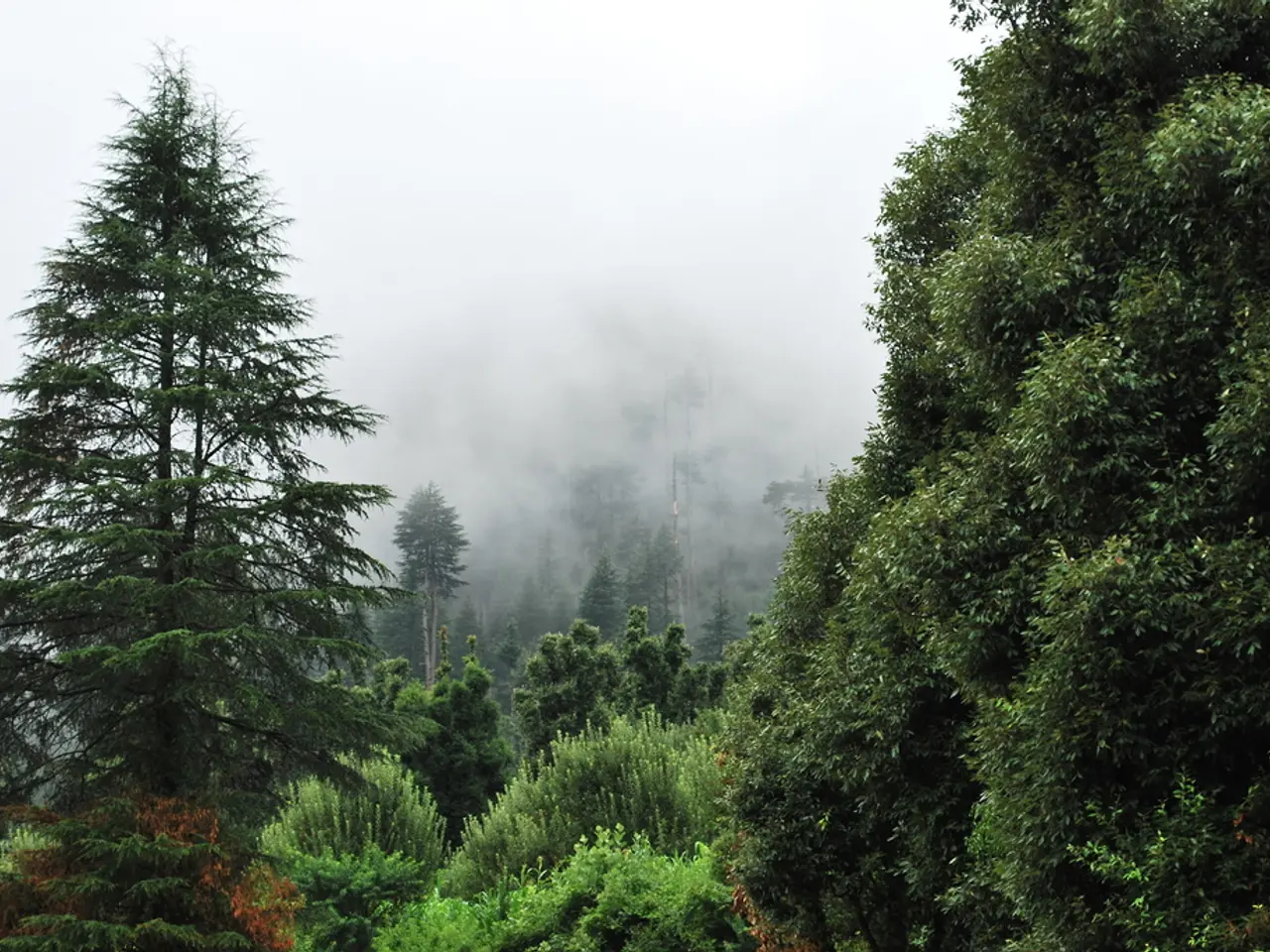Bavarian Summer Rainfall: Explaining the Similarities with India's Monsoons
In the heart of Europe, a new weather pattern is making its presence felt - the Central European Summer Monsoon. This phenomenon, particularly evident in Bavaria, is reshaping the summer weather landscape, bringing increased rainfall, thunderstorms, and localized flooding.
Meteorologists have observed an uptick in such weather patterns for several years, attributing this change to a complex interplay of factors. These include the altered behavior of jet streams, warmer seas, modified air pressure distributions, and an overall more unstable climate system.
The Central European Summer Monsoon forms primarily due to differential heating between European land masses and adjacent water bodies or continental features during summer. This heating drives moist air advection inland, resulting in significant rainfall and thunderstorms.
This mechanism shares similarities with the tropical monsoon, but there are crucial differences in formation and effects.
| Aspect | Central European Summer Monsoon (e.g., Bavaria) | Tropical Monsoon (e.g., South / East Asia) | |----------------------------|-------------------------------------------------------------------|----------------------------------------------------------------| | Primary driver | Temperature contrast between European land masses and nearby Atlantic and continental areas leading to low-pressure zones over land | Strong land-sea thermal contrast, especially between the Indian Ocean and the Asian landmass creating intense low-pressure zones over the heated continent | | Seasonality | Summer months, but less pronounced and more variable | Well-defined summer monsoon season, typically June to September | | Wind pattern | Shift towards moist air inflow from the Atlantic or Mediterranean, often modified by local topography (Alps) and continental influences | Large-scale reversal of winds, bringing moist oceanic air from the Indian Ocean/Western Pacific inland | | Rainfall characteristics| Closer to convective summer precipitation with thunderstorms, often influenced by orography and frontal systems, less continuous heavy rainfall | Sustained heavy rains over several months, including deep convection, widespread and intense precipitation events | | Atmospheric structure | Weaker monsoon circulation with smaller-scale convective systems | Strong and extensive monsoon circulation, including high-altitude anticyclones like the Asian Summer Monsoon Anticyclone (ASMA)[1] | | Impact on region | Provides necessary summer precipitation for agriculture and replenishment but can cause localized flooding and storms in Bavaria | Critical for water supply, agriculture (e.g., rice, tea), ecosystem support but can cause flooding, landslides, and infrastructure damage on a vast scale[3] |
In Bavaria, the Central European monsoon manifests as increased summer rainfall and frequent thunderstorms due to the convergence of moist air masses over the European continent, sometimes modulated by the Alps' orography. The Alpine region acts as a natural dam, causing moist air from the south or southeast to rise, cool, and release moisture in the form of rain, a phenomenon known as orographic lift.
However, when rain events are not localized but cover large areas, a so-called training weather pattern can develop, leading to repeated rainfall over the same region, causing flooding, flooded basements, and rising river levels.
The warming of the Mediterranean Sea, with an average surface temperature of around 27 degrees in July 2025, about 2 degrees above the long-term average, provides more moisture to the atmosphere, serving as fuel for convective weather situations like thunderstorms, heavy rain, and low-pressure systems.
The author of this article, Dominik Hochwarth, is a journalist working for VDI Verlag. Meteorologists are not yet speaking of a fixed climate phenomenon, but the recurrence of similar patterns suggests that summers in Bavaria will be wetter, more unpredictable, and characterized by humid warm air, with consequences for infrastructure, agriculture, and water management. The combination of warmer seas, blocking highs, and stationary low-pressure systems is a serious trend. The strength of this pattern in the future depends on how the global climate system continues to change.
[1] Asian Summer Monsoon Anticyclone (ASMA): https://en.wikipedia.org/wiki/Asian_Summer_Monsoon_Anticyclone [3] Impact of monsoons on South and East Asia: https://www.britannica.com/topic/monsoon/Impact-on-South-and-East-Asia
- The Central European Summer Monsoon resembles the tropical monsoon in its convergence of moist air masses, but it lacks the extensive monsoon circulation and high-altitude anticyclones seen in the latter, particularly in South and East Asia.
- As climate change continues to induce alterations in the European weather landscape, Bavaria may witness more frequent summer thunderstorms and increased rainfall, much like the affected areas of South and East Asia experiencing monsoon seasons.








